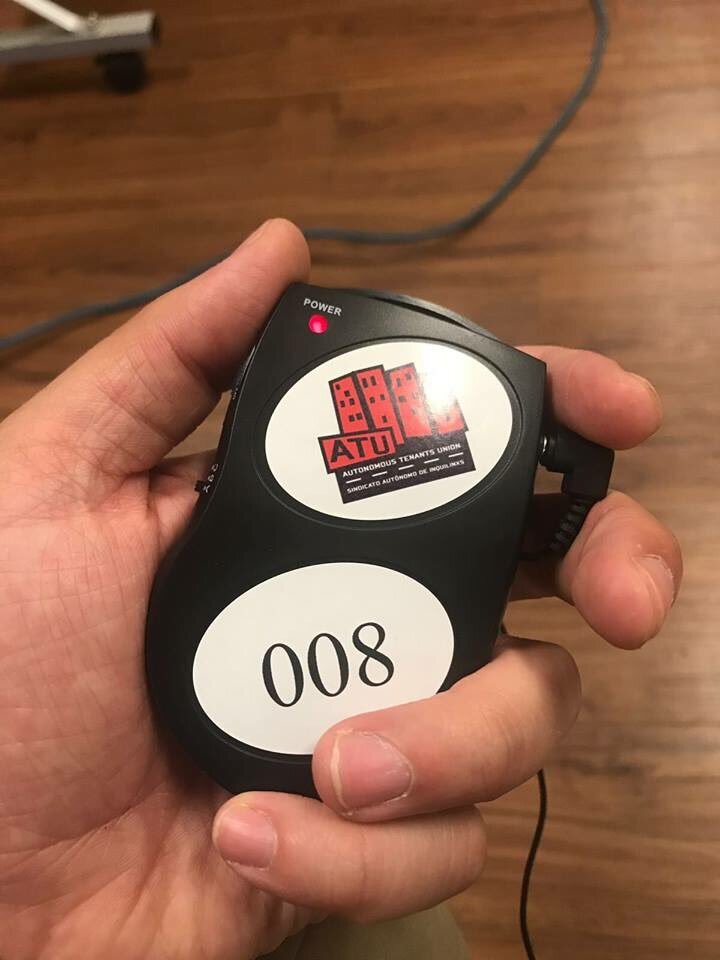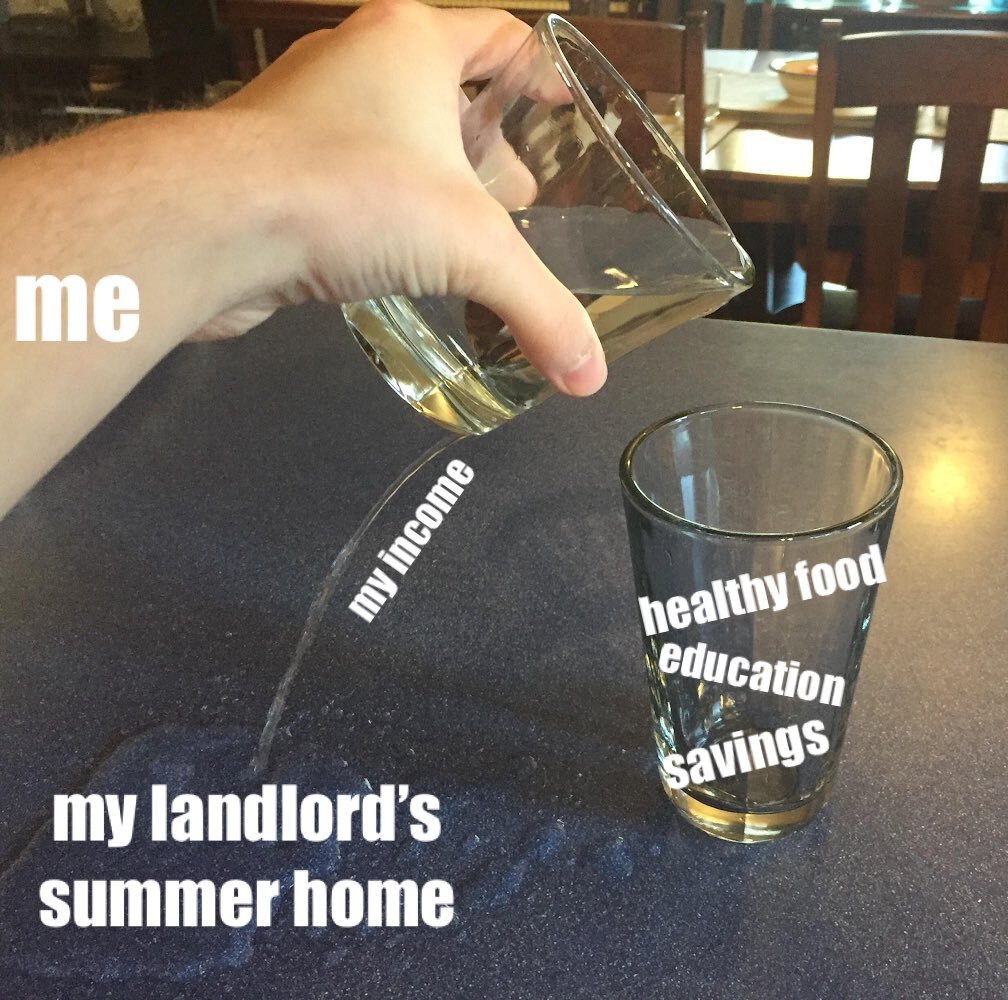Newsletter | June 2018
A Win for Language Justice
Deepest thanks to all those who contributed to our interpretation equipment fundraiser! With your support, ATU and Albany Park Defense Network were able to raise $1,390 and purchase equipment. This will allow us to continue breaking down language barriers and organizing for community control of housing. When we fight, we win!
Who’s Buying Chicago?
On Saturday, May 26, ATU hosted an asamblea where we highlighted some of the major developers we’ve fought and shared organizing tactics. We were pleased to see many new faces! This proves that people all over the city are ready to challenge greedy developers as they attempt to buy up our communities and remake them into playgrounds for the wealthy.
Topics we covered included how to look up building PINs, get detailed information about landlords and mobilize our networks for support. We also released a tactics zine in both English and Spanish.
What is Affordable Housing?
Given our clownish Secretary of Housing and Urban Development Ben Carson’s proposal to raise subsidized housing rents from 30% to 35% of a tenant’s income, we’re thinking about what it means for commodified housing to be “affordable.”
Many of us grew up hearing that the rule of thumb for affordable rent is 30% of your income. We know that housing that even meets this 30% standard is scarcely available to working class tenants, but why have we accepted a reality where landlords deserve even 30%? This rent standard’s impact can vary widely across tenants with differing incomes and expenses. Who decided that a disabled tenant on a $735/month fixed income could “afford” to throw $220 of that income towards a roof over their head? Or that a tenant working full time at minimum wage can “afford” to waste 30% of their income on subpar housing in a food desert with poor transportation?
This standard has shifted over time, along with the dominant politics of the day. The first “percent-of-income” standard for housing costs was established by the federal government shortly after the 1937 United States National Housing Act created our public housing program: public housing tenants were expected to contribute 20% of what they earned. In 1959, The Housing Act gave local housing authorities more power to set their own rent guidelines, and underfunded agencies attempted to meet costs by raising rent far above 20%. Ten years later, The Brookes Amendment raised the national guideline to 25%. By 1981, the Reagan Administration raised it yet again to 30%. Over time, this guideline became naturalized and was adopted as a rule of thumb for both subsidized and private housing.
Clearly, this constantly shifting “rule of thumb” is an arbitrary number imposed upon tenants by the state and the interests of the property owners. We believe that housing is a human right, and that landlords are not entitled to any percent of the working class’ earnings simply because their name is on a deed.




